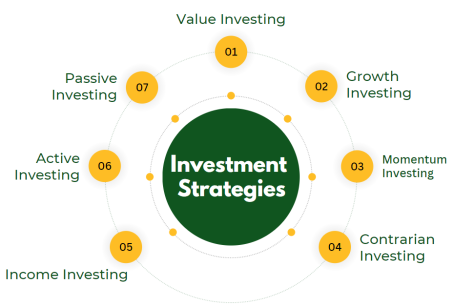Introduction: Investing in an Era of Uncertainty
Global financial markets are increasingly characterized by volatility, rapid technological change, and shifting geopolitical dynamics. Traditional static investment models—once reliable in stable environments—struggle to deliver consistent results in today’s unpredictable landscape. As a result, adaptive investing, an approach that emphasizes flexibility and responsiveness, has emerged as a vital strategy for both institutional and individual investors.
This essay explores how adaptive investing works, why it is necessary, and how it can be applied in real-world scenarios to navigate volatile markets effectively.
Part I – The Changing Nature of Market Volatility
1.1 Economic Drivers of Volatility
- Inflation cycles, interest rate adjustments, and global debt levels.
- Economic divergence across regions (U.S. tightening vs. Asia’s growth stimulus).
1.2 Geopolitical Shocks
- Trade wars, sanctions, and regional conflicts disrupt supply chains.
- Example: Ukraine war reshaping global energy and commodity markets.
1.3 Technological Disruption
- Rapid changes in sectors such as fintech, biotech, and AI.
- Market bubbles and corrections triggered by innovation cycles.
1.4 Environmental and Social Uncertainty
- Climate policies influencing energy and manufacturing sectors.
- ESG requirements adding new layers of risk and opportunity.
Part II – Principles of Adaptive Investing
2.1 Flexibility and Diversification
- Adaptive portfolios emphasize dynamic asset allocation.
- Balancing equities, bonds, commodities, and alternatives.
2.2 Real-Time Data Utilization
- Using big data and AI algorithms for predictive modeling.
- Incorporating geopolitical and environmental indicators.
2.3 Risk Management as Core Strategy
- Adaptive models prioritize downside protection.
- Use of stop-loss orders, hedging instruments, and safe-haven assets.
2.4 Behavioral Awareness
- Recognizing investor psychology in volatile times.
- Avoiding panic selling or over-leveraging during uncertainty.

Part III – Adaptive Strategies in Practice
3.1 Dynamic Asset Allocation
- Rebalancing portfolios quarterly or even monthly.
- Shifting exposure to sectors like healthcare and renewables during downturns.
3.2 Tactical Hedging
- Hedging with gold, U.S. treasuries, or volatility indices (VIX).
- Options and futures used to cushion against sharp declines.
3.3 Sector Rotation
- Identifying industries that outperform at different stages of economic cycles.
- Example: Energy and defense stocks during geopolitical crises.
3.4 Alternative Investments
- Private equity, real estate, and infrastructure as stabilizers.
- Cryptocurrencies and digital assets as high-risk, high-reward segments.
Part IV – Case Studies of Adaptive Investing
4.1 The 2008 Financial Crisis
- Investors who adjusted quickly into treasuries and gold preserved capital.
- Those locked into rigid strategies suffered long recoveries.
4.2 COVID-19 Pandemic
- Adaptive strategies shifted toward technology and healthcare.
- Non-adaptive portfolios tied to tourism and oil collapsed.
4.3 Energy Market Volatility (2022–2023)
- Investors diversified into renewables while hedging oil exposure.
- Adaptive allocation outperformed static energy-heavy portfolios.
Part V – Risks and Limitations of Adaptive Investing
- Overtrading: Excessive portfolio adjustments erode returns via fees.
- Data Dependence: Reliance on AI models risks errors from biased or incomplete data.
- Short-Termism: Adaptive investing may favor immediate reaction over long-term value.
- Accessibility: Advanced adaptive tools often limited to institutional investors.
Part VI – Future of Adaptive Investing
- AI-driven adaptive platforms for retail investors.
- Integration of climate risk metrics into portfolio adjustments.
- Cross-border adaptive funds designed for global shocks.
- Growth of personalized adaptive portfolios using fintech apps.
Conclusion: Thriving Amid Market Uncertainty
Adaptive investing is not about predicting the future with certainty—it is about remaining prepared for multiple futures. By embracing flexibility, dynamic allocation, and robust risk management, investors can thrive in volatile markets where static strategies fail.
In an unpredictable world, the ability to adapt quickly has become the ultimate competitive advantage.
















































